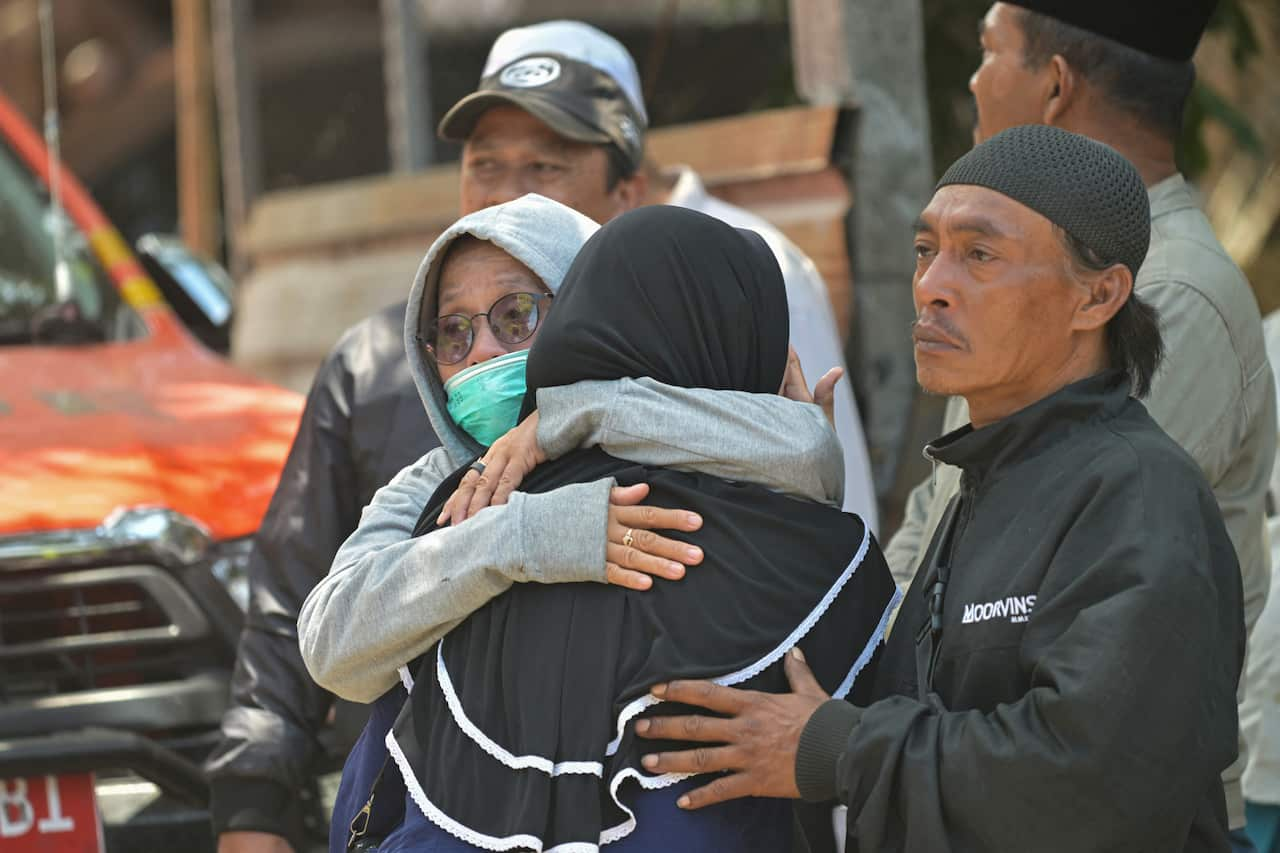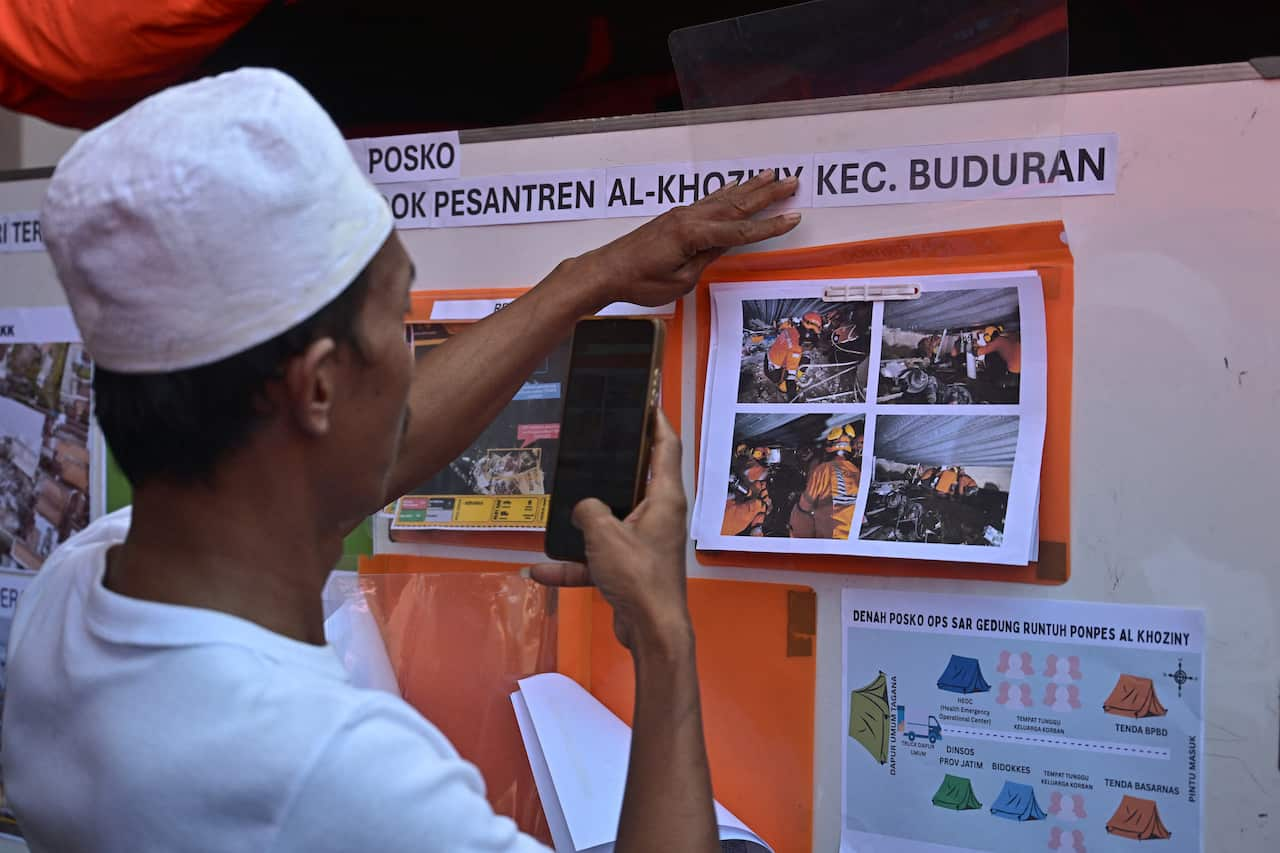Rescuers detected "no more signs of life" at a collapsed Indonesian school where 59 people were believed missing days after it gave way, an official said Thursday, raising fears no more survivors would be found.
An estimated 91 people are believed to be in the ruins of the multi-storey school on the island of Java that gave way suddenly on Monday AEST, as students had gathered for afternoon prayers.
After days of rescue operations, 59 people were still feared buried under the rubble after at least five people had been confirmed dead.
"We used high-tech equipment like thermal drones, and, scientifically, there were no more signs of life," said Suharyanto, the head of the country's disaster mitigation agency.

Relatives of missing students embrace as search and rescue operations continue. Source: AFP / Juni Kriswanto
"I've been here since day one. I am hoping for the best news, that my brother survives. I am still hopeful," said Maulana Bayu Rizky Pratama, whose 17-year-old brother is missing.
"It's been four days, I hope my brother will be found soon. I feel sad thinking of him being down there for four days," the 28-year-old added.
Rescuers pulled five survivors from the rubble on Wednesday as frantic parents demanded that searchers speed up efforts to find dozens of children believed to still be trapped.
Abdul Hanan, whose 14-year-old son is missing, said children under the rubble had been crying for help.
"The rescue operation must be accelerated," he urged.
Investigations into the cause of the collapse in the town of Sidoarjo are ongoing, but initial signs point to substandard construction, experts have said.
Tunnels and drones
The rescue operation is complex as vibrations happening in one place can impact other areas, said Mohammad Syafii, head of the National Search and Rescue Agency.
"So now, to reach the spot where the victims are, we have to dig an underground tunnel," he told reporters.
But digging itself poses challenges, including destabilising the rubble. And any tunnel will only provide an access route around 60 centimetres wide because of the structure's concrete columns.

A relative of a student looks at pictures hung on a board. Source: AFP / Juni Kriswanto
The families of the missing agreed on Thursday for heavy equipment to be used, Pratikno, coordinating minister for human development and cultural affairs said, adding that rescuers would exercise "extreme caution".
But the operation could last longer than seven days if people are still missing, a search and rescue agency official said.
The school collapse was so violent it sent tremors across the neighbourhood, said local resident Ani.
"I felt a vibration and then I heard a noise. I immediately ran to save myself. I didn't realise at first it was a building collapse," the grocery stall owner said.
Rescuers in orange uniforms were seen appearing to snake cameras under the rubble to hunt for traces of survivors.
Water and food was being sent in, but access was through a single point, he said.
The operation was complicated by an earthquake, which struck offshore overnight Tuesday to Wednesday, briefly halting the search.
Local charitable organisations have set up posts offering families food and drink around the ruins.
The building folded after its foundation pillars failed to support the weight of new construction on the fourth floor of the school, said the national disaster management agency spokesman.
Share

